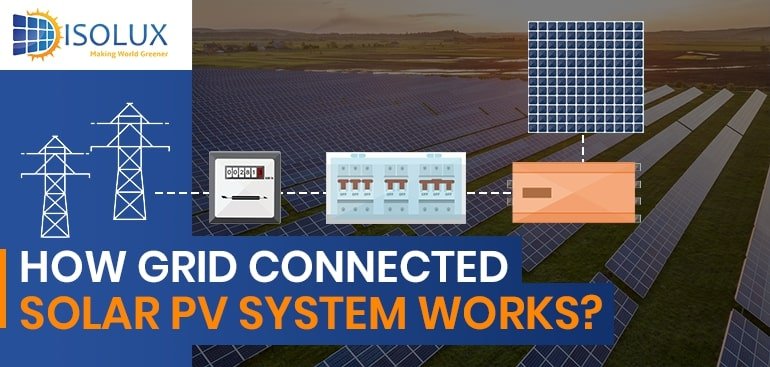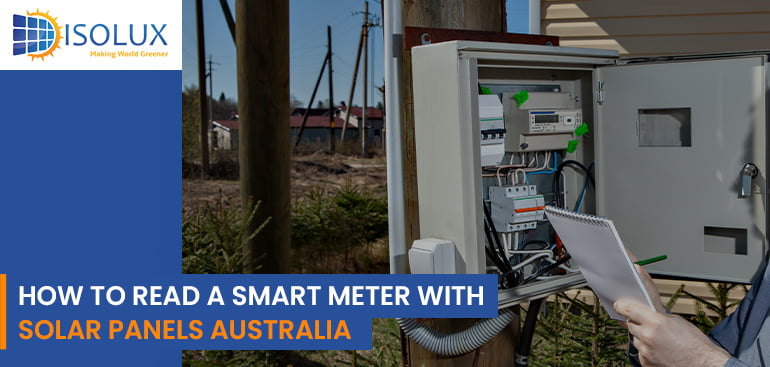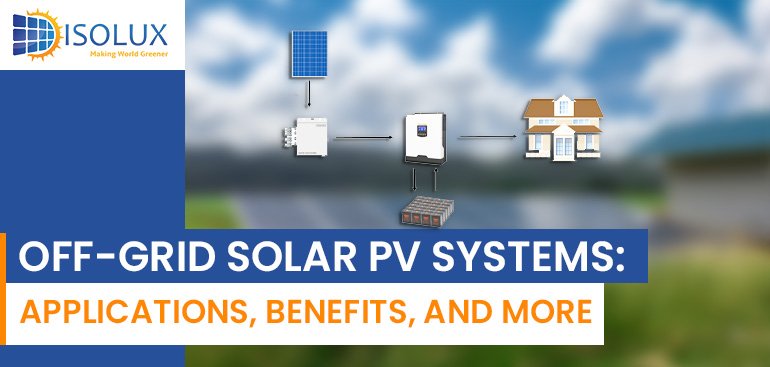In suburban areas of Australia, the solar system is connected to the grid. In this blog, we will break down all important facts related to grid connected solar PV systems to make them easily comprehensible for you.
What Is a Solar PV System?
A solar PV system, often referred to as a solar panel system, is a technology that captures sunlight and converts it into electrical energy. It consists of photovoltaic modules, which are commonly known as solar panels, along with other essential components like inverters, mounting structures, and wiring.
How Does a Grid Connected PV System Work?
Grid-connected solar PV systems, also known as grid-tied systems, are designed to operate with the local electric utility grid.
Step-by-step process of how Grid Connected Solar Panel System Work:
1. Sunlight Absorption
The process begins when sunlight hits the solar panels installed on the roof or ground-mounted structures. These panels are equipped with photovoltaic cells that contain semiconductors, typically made of silicon. When sunlight strikes these cells, it excites the electrons within, creating a flow of direct current (DC) electricity.
2. DC to AC Conversion
The electricity generated by the solar panels is in the form of DC, which is not suitable for most household appliances and the grid. To make it compatible, an inverter is employed. The inverter’s role is crucial as it converts DC electricity into alternating current (AC), which is the standard form of electricity used in homes and on the grid.
3. Powering Your Home
Once the DC electricity is converted into AC, it can be used to power your home’s electrical needs. When your solar panels generate more electricity than your home consumes, the excess power flows back into the grid.
4. Net Metering
Grid-connected systems often feature a net meter. This device tracks the electricity your solar system exports to the grid when it produces more than your home consumes. The surplus electricity is sent back to the grid, and you receive credits for it on your utility bill. This concept is known as net metering.
5. Utility Grid Connection
Grid-connected systems are unique because they remain connected to the utility grid. This means that during periods when your solar system isn’t generating electricity (e.g., nighttime), you can still draw power from the grid seamlessly.
6. Enjoying the Benefits
Grid-connected solar PV systems offer several advantages:
Reduced Electricity Bills: By generating your electricity, you can significantly reduce your monthly energy bills.
Environmental Benefits: Solar energy is clean and green, producing no harmful emissions.
Grid Support: Your system contributes to the stability of the grid by supplying excess electricity.
Financial Incentives: Many regions offer incentives and tax credits for solar installations.
Key Components of a Grid Connected PV System
Understanding the key components of a grid-connected solar PV system is essential for anyone considering this renewable energy option:
1. Solar Panels
Solar panels are the heart of the system. They capture sunlight and convert it into electricity. When selecting panels, factors such as efficiency, durability, and manufacturer warranties should be considered.
2. Inverter
The inverter is responsible for converting DC electricity from the solar panels into AC electricity usable by your home and the grid. Modern inverters come with advanced features like monitoring and optimization.
3. Mounting Structures
Mounting structures ensure that your solar panels are securely installed on your roof or the ground. Proper installation is crucial for maximizing energy production.
4. Monitoring System
Many solar PV systems include a monitoring system that allows homeowners to track their energy production and system performance in real-time.
5. Grid Connection
Grid connection involves the installation of a bidirectional meter and the necessary electrical connections to ensure your system can interact seamlessly with the grid.
Get $100 by Referring a Family and Friend’s
What to Keep in Mind While Installing a Grid Connected PV System?
Experts of solar power installation Sydney shared some tips to keep in mind while using or thinking about using grid connected solar systems:
If your roof is high enough and if windy weather is common in your area, then you must consult your installation company before getting the solar PV system installed.
Solar PV systems possess more weight than solar panels. Therefore, when you think of installing a grid connected system you need to make sure that your roof will be able to handle that load for the next 25 years. If it is not, you must renovate it before calling solar PV installers.
Some electrical components will need fixing as time passes. Other than that, there are no expenses related to system maintenance.
Benefits of Grid-Connected Solar PV Systems
1. Cost Savings
Grid-connected solar PV systems can significantly reduce your electricity bills, and in some cases, you may even earn money through net metering.
2. Environmental Impact
By generating clean energy from sunlight, you reduce your carbon footprint and contribute to a more sustainable future.
3. Grid Stability
These systems can enhance the reliability and stability of the electrical grid by providing a distributed source of energy.
4. Return on Investment
Investing in solar panels can yield a substantial return on investment over time, as the savings on energy bills add up.
Conclusion
In conclusion, grid-connected solar PV systems are a remarkable innovation that allows homeowners and businesses to harness the power of the sun for clean and sustainable energy production. By understanding how these systems work and the benefits they offer, you can make an informed decision about incorporating solar energy into your life. Embracing solar power not only reduces your carbon footprint but also provides long-term financial and environmental benefits. So, if you’re looking for a way to make a positive impact on the environment while saving money, consider making the switch to grid-connected solar PV today.
Read Next Blog:




